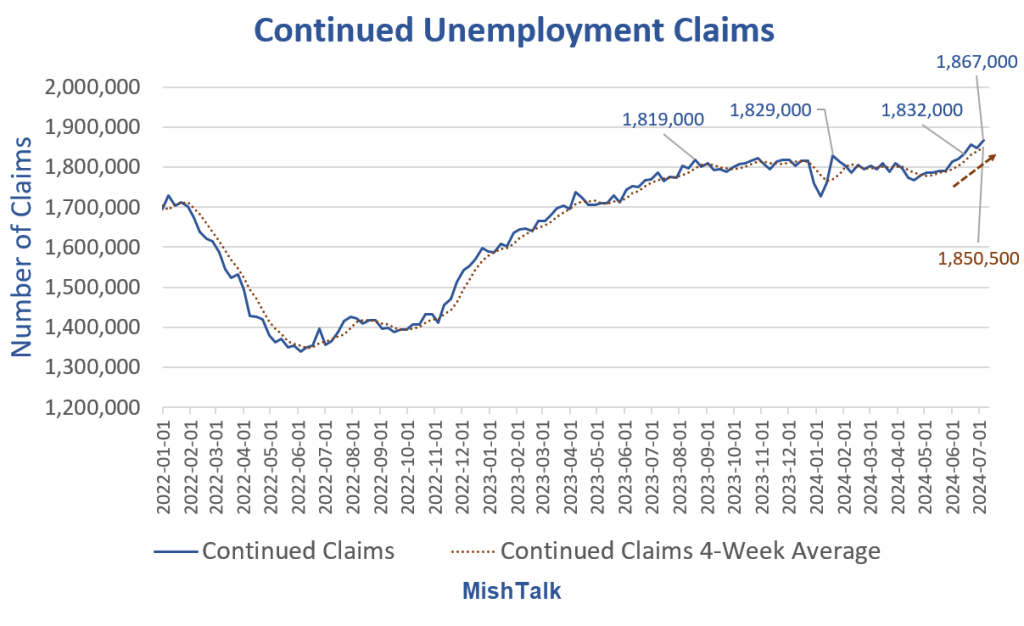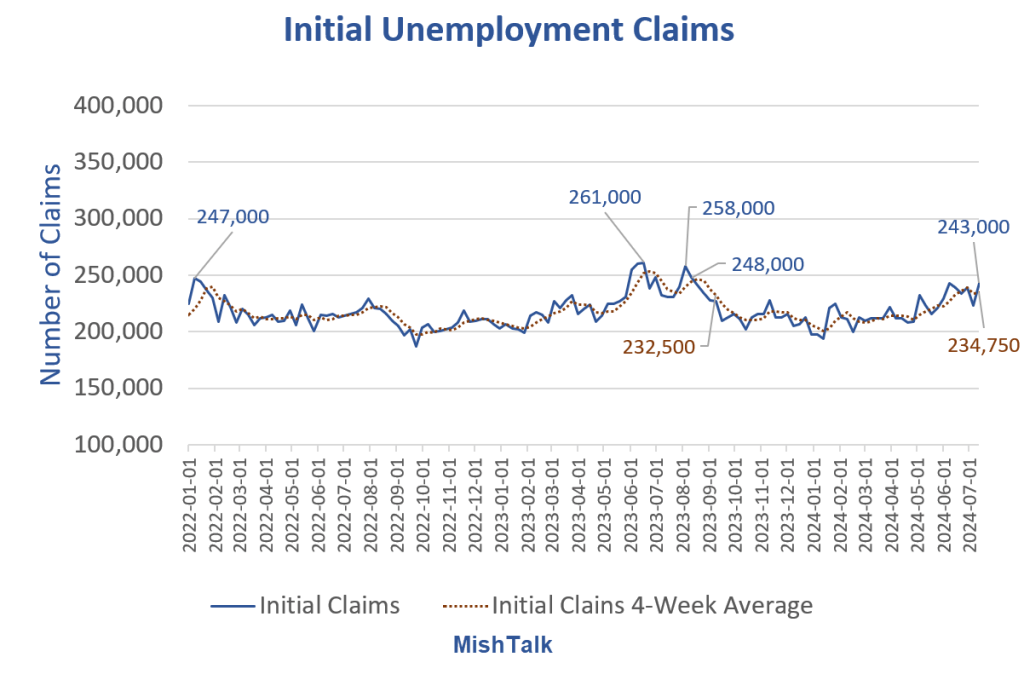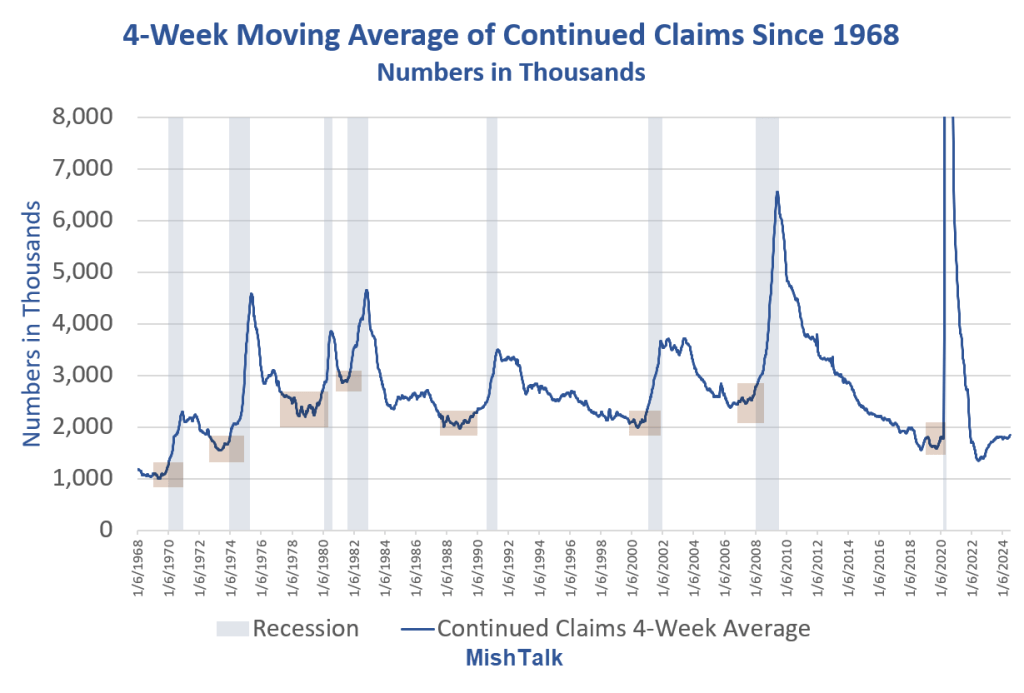After stabilizing for about a year, continued unemployment claims have surged in the last two months.

The Weekly Claims report from the Department of Labor shows that it is increasingly hard to find a new jobs if you are laid off.
Continued Claims Key Points
- The advance number for seasonally adjusted insured unemployment during the week ending July 6 was 1,867,000, an increase of 20,000 from the previous week’s revised level.
- This is the highest level for insured unemployment since November 27, 2021 when it was 1,878,000. The previous week’s level was revised down by 5,000 from 1,852,000 to 1,847,000.
- The 4-week moving average was 1,850,500, an increase of 11,500 from the previous week’s revised average.
- This is the highest level for this average since December 4, 2021 when it was 1,859,750. The previous week’s average was revised down by 1,250 from 1,840,250 to 1,839,000.
Initial Unemployment Claims

Initial Claims Key Points
- In the week ending July 13, the advance figure for seasonally adjusted initial claims was 243,000, an increase of 20,000 from the previous week’s revised level.
- The previous week’s level was revised up by 1,000 from 222,000 to 223,000.
- The 4-week moving average was 234,750, an increase of 1,000 from the previous week’s revised average.
- The previous week’s average was revised up by 250 from 233,500 to 233,750.
Continued Claims Long Term

It’s not the level that indicates a problem, it’s a sustained uptrend from recent lows that’s highlights trouble.
Note that 5 out of 12 Fed Districts Show Flat or Declining Economic Growth
The Fed’s Beige Book solidifies the recession view.
Recession When?
I think a recession started in May or June and I have seen little to change my mind.
For discussion, please see Weak Data Says a Recession Has Already Started, Let’s Now Discuss When
Add continued claims to the trend of weakness appearing nearly everywhere.
